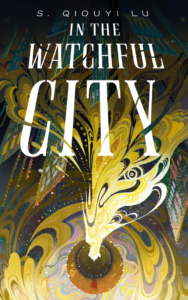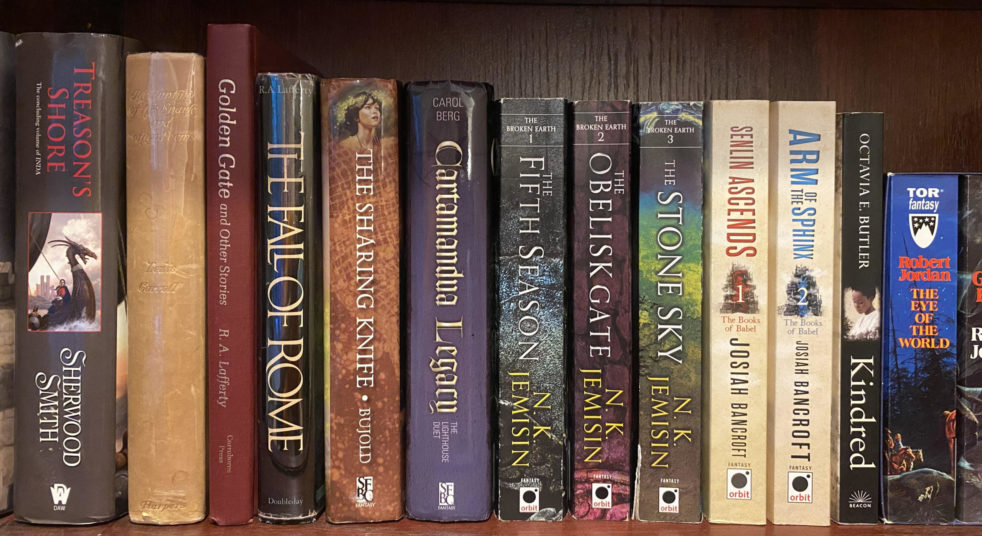
S. Qiouyi Lu’s debut novella, In the Watchful City, came across my radar in late summer and immediately caught my attention with the unusual combination of (1) a few glowing reviews from other readers who significantly overlap my tastes, (2) a perfect fit for a bingo square I hadn’t hit (2021 debut), and (3) easily manageable length. I immediately requested my library add it to their collection (note: I continue to recommend doing this–lots of libraries are happy to take requests!) and was excited to receive the message saying they had and that a copy was waiting for me.
The glowing reviews didn’t give me much sense of plot, and it wasn’t long before I realized why. In the Watchful City consists of several distinct short stories in a frame narrative. Unlike the last book I’d read with a similar structure—Marie Brennan’s Driftwood (full review)—the frame narrative does have some heft to it, not serving merely as an excuse to tell several stories in the same universe, but this certainly isn’t a novella driven by an overarching central plot.
The story opens with Anima, who has given up ær* ordinary human life to become part of the complex biological network that watches over the city of Ora. While ær human body must never stray from ær post, ær consciousness can inhabit various animals within the city to monitor activity and serve the citizenry. But a mysterious story-collecting stranger arrives on the scene and shares tales that force ær to reflect on the key moments in ær life.
*Æ/ær, the pronouns used by both the author and the main character, make one of six sets of pronouns used in the novella, at least three of which may be unfamiliar to many readers. As one of those unfamiliar readers, it was disorienting for 20 or 30 pages and then I got used to it.
Like I said, not a huge driving plot—it’s about sharing stories and evaluating life in light of those tales. But a novella with this kind of structure will rise and fall on the quality of the stories, and in this case, they are gorgeous. And the main character’s own story and response to what æ hears are enough to pull the narrative together, even though the stories are unrelated in all but theme and world.
That theme does tend to be a dark one, with few happy endings and more than one story featuring suicide. And the author doesn’t give easy answers, letting the characters respond in different ways without clearly signposting which responses are prescribed to the reader. There are a number of clear villains, with tyrannical governments and ruthless exploiters of the weak, but the heroes can be ambiguous—starting with the not-quite-utopian and not-quite-dystopian benevolent surveillance state that Anima serves.
Not every story is a hit, with a mediocre interlude of sexual exploration and a fictional sport that doesn’t quite feel real, but the creativity in both narrative structure and worldbuilding and the beauty in the prose is crystal clear throughout the novella, and the stories that do hit pack an incredible punch. I won’t recommend this to someone looking for clear resolutions or who isn’t in the mood to face some real darkness, but Lu’s debut novella proves ær a talent to watch closely moving forward.
Recommended if you like: beautiful prose, short stories, heavy topics
Can I use it for Bingo? It’s hard mode for 2021 Release and Set in Asia, and is also a Debut.
Overall rating: 17 of Tar Vol’s 20. Five stars on Goodreads.
